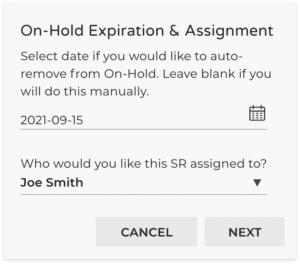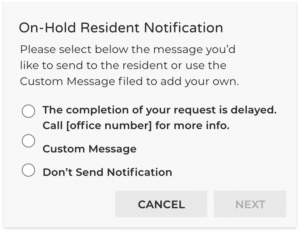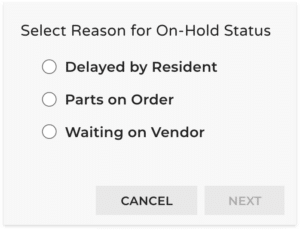SERVICE REQUESTS “ON-HOLD” WAS A HIT…
so we made it even better.
In 2020, we introduced our on-hold feature to help property teams manage service requests more efficiently amid rapidly changing conditions. Today, we’re excited to announce major enhancements designed to improve property maintenance workflows, save time, and keep residents informed.
Behind the On-Hold Update
Our original on-hold tool allowed property management teams to pause service requests and manage them internally. With increased demand for pandemic-era flexibility, the feature quickly became essential for handling backlogged work. This year, we leveled up with enhancements that close communication gaps, automate workflow steps, and improve visibility—especially important when managing complex property maintenance workflows at scale.
What’s New
 1. Dedicated On-Hold Dashboard Widget
1. Dedicated On-Hold Dashboard Widget
Track all paused service requests at a glance with a new dashboard widget. Filter by property, technician, or status to focus attention where it matters most.
2. Expiration & Reroute Selection
Set optional hold expiration dates and automatically return requests to active status. Or choose to reroute the request to a different service professional based on availability or expertise—ensuring service continuity in complex property maintenance workflows.
3. Resident Notifications
Keep residents informed with preloaded or custom notifications when their service request is placed on hold or resumed. Reduce confusion and inbound inquiries by clarifying next steps.
Reason Codes & Tags
Apply standard reason codes (e.g., “Parts Delayed,” “Weather Impact”) or custom tags when pausing a request. This tagging system improves reporting capabilities and makes it easier to identify recurring workflow delays.
How These Enhancements Keep Your Property Maintenance Workflow Running Smoothly
-
Faster Triage: Manager can pause a service request, tag it appropriately, and then set an automatic date to revisit it.
-
Improved Transparency: When requests expire or are rerouted, service staff and residents automatically get notified—no guesswork.
-
Better Reporting: With consistent reason codes and tags, leadership can track on-hold trends and address systemic bottlenecks.
Together, these updates make your property maintenance workflows more resilient, transparent, and efficient.
Real-World Scenarios
| Scenario | Previous Process | With On-Hold Enhancements |
|---|---|---|
| Parts Unavailable | Manager manually notes hold and emails status to the vendor. | Manager places request on hold, tags “Parts Delayed,” schedules notification to resident, and resumes automatically when parts arrive. |
| Weather Delay | Tech calls to let residents know schedule is postponed. | System auto-sends resident notice when hold is applied, and reroutes request to backup tech if needed. |
| Vendor Overload | Requests sit inactive until someone remembers. | Dashboard widget highlights held jobs and sends auto-reminders on expiration. |
What’s Next
These enhancements are just the start—look out for future updates including:
-
Bulk on-hold operations across multiple requests (ideal for mass disruptions)
-
Custom automation rules that trigger actions based on tags or properties
-
Expanded analytics, including reports on on-hold time and routing history
All of this builds on our commitment to strengthening property maintenance workflows through automation, clarity, and actionable reporting.
Want to see these features in action?
Schedule a NetVendor Maintenance demo to explore:
-
The new on-hold dashboard widget
-
Automated expiration and rerouting tools
-
Resident alert settings
-
Tagging and reason-code reporting
Transform your approach to on-hold requests—and streamline your property maintenance workflows for improved efficiency and resident satisfaction.





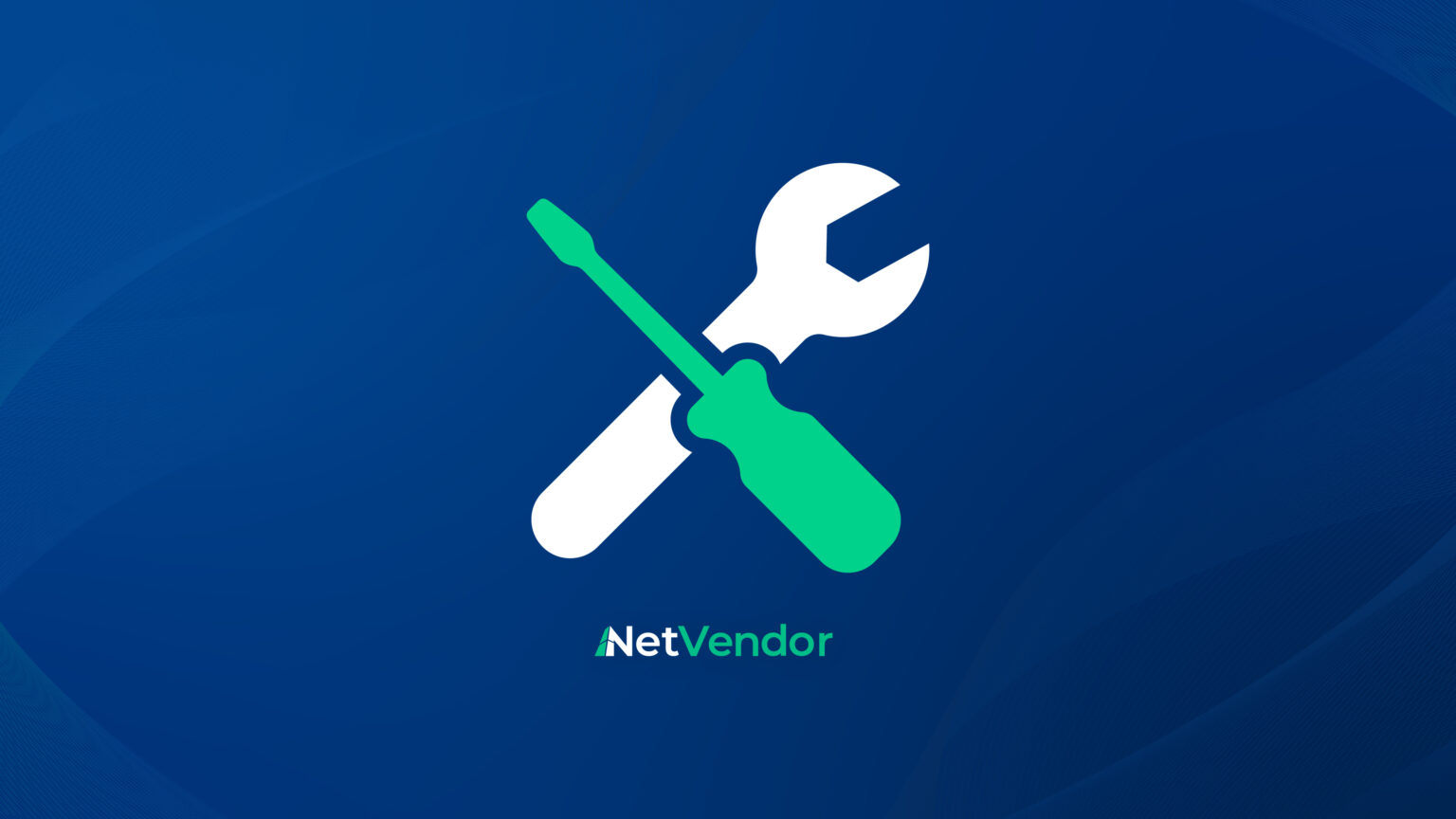
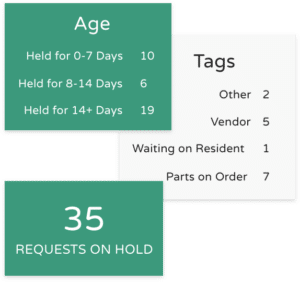 1. Dedicated On-Hold Dashboard Widget
1. Dedicated On-Hold Dashboard Widget